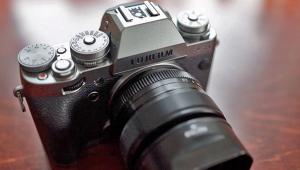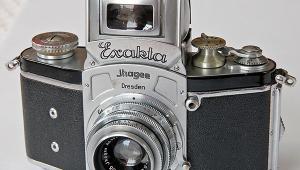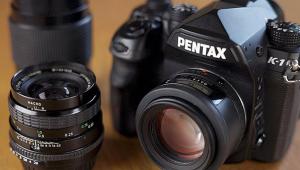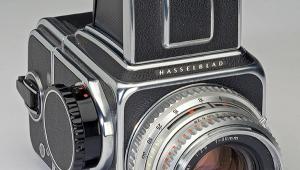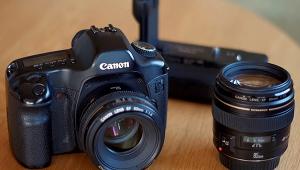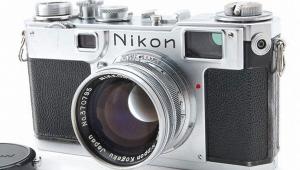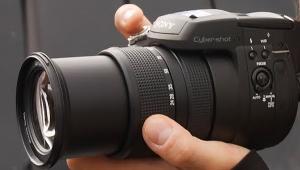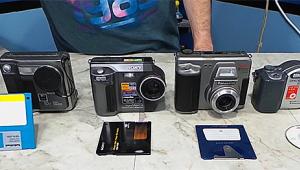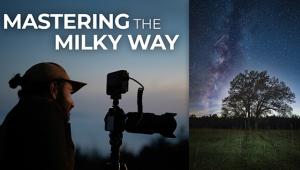American Oddities: The Argus Odyssey & More
America did not invent photography—that honor must go to the French—but US camera manufacturers can take credit for introducing simple ways of taking pictures and bringing photography to the masses. Along the way, many also came up with often strange and sometimes ugly designs.
The International Research Corporation was among those manufacturers, introducing a first camera, the Argus A, in 1936. It was a simple Bakelite model for 35mm film, with a 50mm f/4.5 lens that pulled out from the body on a metal tube and a small range of shutter speeds from 1/25 to 1/200 sec.
Variations on that original theme, plus a few pseudo twin lens reflexes, followed before the company’s most popular and successful camera was launched, leading to the company’s change of name to Argus, Inc. in 1944.
The “Brick” Is Born
The camera began life as the Argus C and the C2 in 1938, before the addition of flash synchronization turned it into the C3 in 1939. Of the three models, that was the one that really took off, selling for $35 and accounting for the best part of more than 2,000,000 C-type camera sales.

All Photos © John Wade

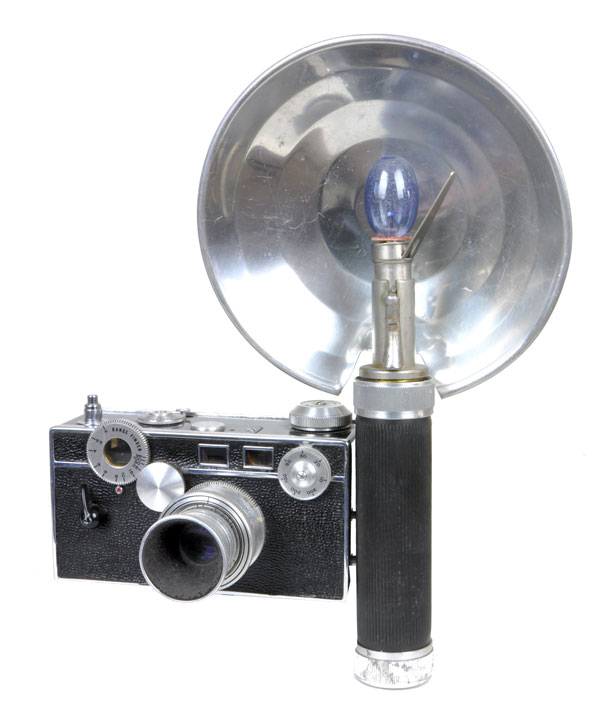
The Argus C3 was solidly built in black plastic, polished at the ends, both top and bottom, with black leatherette covering on the front and back. Its oblong shape with squared-off corners soon earned it the nickname of “The Brick.” A survey at the time reported that the public thought it looked scientific.
The three principal controls for focusing, shutter speed, and aperture adjustment were all on the front face of the camera and lens. On the top right was a dial that set speeds from 1/10 to 1/300 sec.
On the top left was a second dial for focusing, marked from 3 feet to infinity. It protruded above the top of the body to be rotated by a finger while looking through the rangefinder window to the side of the viewfinder. The dial was coupled to the rangefinder and connected to a gear wheel that, in turn, connected to the 50mm f/3.5 Cintar lens’s focusing mechanism. It wasn’t a great idea.
First problem was that the interconnecting cogs that coupled the focusing dial to the lens made the operation very stiff. Second was the rangefinder. The further apart rangefinder windows are placed, the more accurate the mechanism. On the Argus C3 there was only half an inch between them.
The rangefinder itself was suspended inside the body from a metal plate that was part of the top of the camera. Repeated use meant photographers tended to press on this somewhat flimsy plate while releasing the shutter, knocking the rangefinder out of alignment.
Then we come to the aperture adjustment. This was by a ring that revolved around the front element of the lens. No problem there, until the photographer fitted a filter or lens hood, which covered the aperture ring and made it impossible to adjust. To get around that, a small “Y”-shaped accessory was produced with two small holes in the arms of the “Y” that dropped over two equally small dimples on the aperture ring. Now, with a filter or lens hood in place, the protruding tail of the “Y” was used to change apertures—even though it was still almost impossible to see the settings beneath the filter or hood.
The film wind knob was on top of the camera in the usual place, but unusually, the rewind knob was on the base. In fact, just about the only conventional thing about the design was the shutter release, tensioned by a lever on the front of the body and released by a button on top. The camera also had its own dedicated bulb flashgun, which was fitted using two prongs that matched up to sockets in the side of the body.
Despite all these little idiosyncrasies, the Argus C3 developed a reputation for rugged reliability and sharp pictures, making it one of the most popular 35mm cameras ever produced in America. Over the years, several small cosmetic changes were made, but the basic brick-shaped design remained in production until the late 1960s, earning itself a place in the Smithsonian Institution, the world’s largest museum and research complex, for its huge sales record.
The last version, which appeared in 1958, was known as the Match-Matic. Its design was similar to that of the original camera, but it was produced with light brown leatherette on the front and back. Also, exposure was set by a series of EV (Exposure Value) numbers read off a special meter that clipped to the top of the body.
In 2002, the Match-Matic was used by one of the characters in the film Harry Potter and the Chamber of Secrets, gaining it the unofficial name of the Harry Potter Camera and contributing to its current popularity as a collector’s item.

Curiouser & Curiouser
Of course, not every American camera was ugly or odd, but to be honest, quite a few were. Here are some favorites:
Clarus MS-35, 1946: The only camera made by the Clarus Camera Manufacturing Company. It was a chunky design, heavy, uncomfortable to hold and seemed specially designed so that the operator’s left index finger covered one of the rangefinder windows as the camera was raised to the eye. An unreliable shutter completed the specification.

Perfex Speed Candid, 1938: Made by the Camera Corporation of America, the Perfex has been voted by collectors as the ugliest camera ever made. It was equipped with a non-coupled rangefinder, with an extinction meter on the base, and needed a special adapter before a standard cable release could be used. It was, however, distinguished for being the first American 35mm camera with a focal plane shutter.
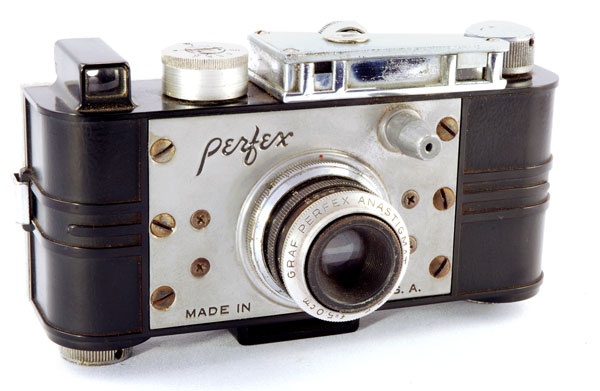
The Kamra, 1928: From the Ellison Kamra Company, this one featured a long Bakelite body with a small trapdoor in the center, lowered to reveal a fixed focus lens and waist-level viewfinder. It took more than 300 pictures on 50 feet of 35mm film, wound by a folding crank in the top of the body. One turn advanced the film, turning it in the opposite direction released the shutter.

The Fotron, 1965: From the Traid Corporation came this giant of a camera which, despite its size, took 24x36mm images on 828 size film. The enormous and heavy body housed a huge rechargeable battery to power the built-in flashgun and film wind mechanism, necessitating the need to charge the camera before use. An 18-hour charge was needed for 10 exposures. For 30 exposures, it was recommended to charge the camera for approximately three days.

The Mercury, 1938: Made by the Universal Camera Corporation, the Mercury took half-frame 18x24mm images on the company’s own No.200 film. A circular hump on top of the body, inscribed with depth of focus information, was there to house the rotary shutter. On the back of the camera a complicated exposure calculator involved dialing in factors such as time of year, time of day, weather conditions, etc., against numerous subject types and film speeds.
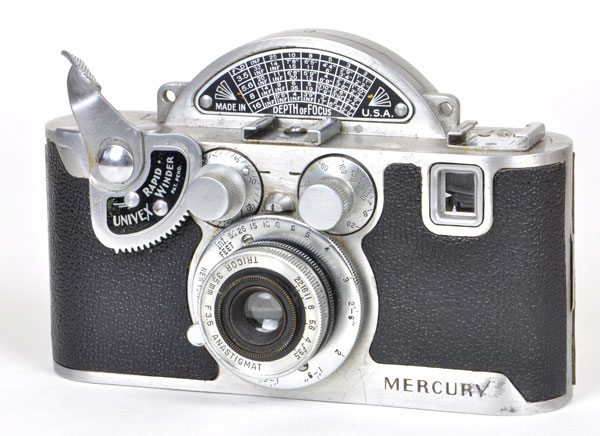
Approximate Prices
While condition is everything, here are some prices you might expect on the cameras in working condition mentioned in this article: Argus A, $20; Argus C3, $25; Argus Match-Matic, $30; Clarus, $50; Perfex, $75; Kamra, $200; Fotron, $40; and Mercury, $50.
- Log in or register to post comments
